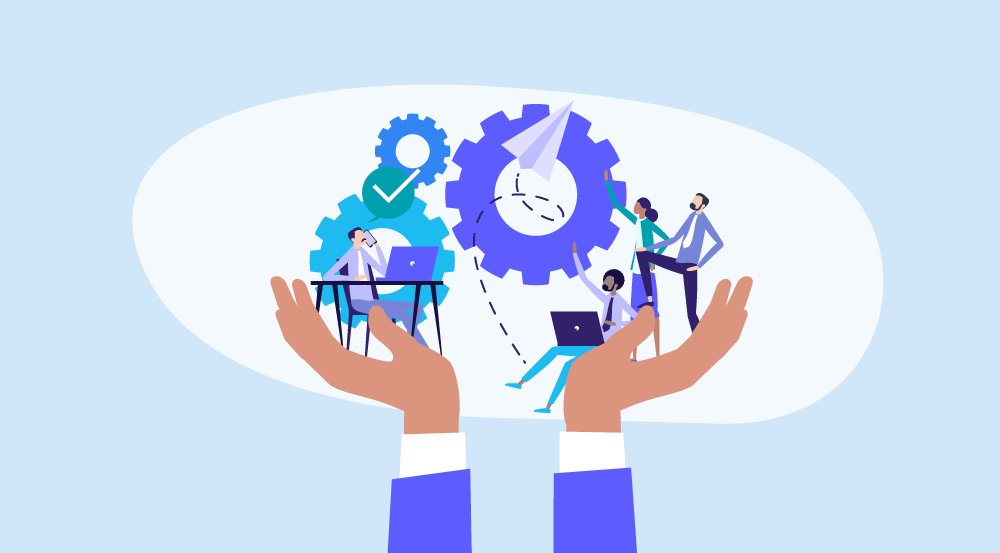
Employee retention is a critical challenge for many organizations, particularly within collections departments where high turnover can impact performance and customer satisfaction. To ensure a stable and motivated team, it’s essential to implement effective retention strategies tailored to the unique needs of collections professionals. This article explores 10 best practices for enhancing employee retention in collections and building a more engaged workforce.
Employee Retention Strategies for Collections: Create a Positive Work Environment
A positive work environment is foundational to retaining employees. In collections, this means fostering a culture where employees feel valued, respected, and supported. Implement regular team-building activities, celebrate achievements, and encourage open communication. Ensure that the workspace is comfortable and conducive to productivity. By creating a supportive atmosphere, you enhance job satisfaction and reduce the likelihood of turnover.
Employee Retention Strategies for Collections: Offer Competitive Compensation and Benefits
Compensation and benefits are crucial factors in employee retention. Ensure that your compensation packages are competitive within the industry. Regularly review and adjust salaries based on performance, market trends, and inflation. Additionally, offer a comprehensive benefits package that includes health insurance, retirement plans, and paid time off. Providing financial security and rewards for hard work can significantly boost employee morale and loyalty.
Provide Opportunities for Career Development
Employees are more likely to stay with a company that invests in their career growth. In collections, offer training programs, workshops, and certifications that help employees develop their skills and advance their careers. Create clear career paths within the department, so employees can see the potential for growth and promotion. Investing in employee development not only improves job satisfaction but also enhances team performance.
Recognize and Reward Performance
Regularly recognizing and rewarding employees for their hard work is essential for retention. Implement a structured recognition program that highlights achievements and contributions. This can include bonuses, employee of the month awards, or public acknowledgment in meetings. Acknowledging employees’ efforts reinforces their value to the organization and encourages continued dedication.
Foster Work-Life Balance
Maintaining a healthy work-life balance is vital for employee retention. In collections, where the job can be demanding, it’s important to offer flexible working arrangements such as remote work options, flexible hours, or compressed workweeks. Encourage employees to take their allotted vacation time and provide support for personal commitments. By promoting work-life balance, you reduce burnout and enhance overall job satisfaction.
Implement Effective Communication Channels
Effective communication is key to a cohesive and motivated team. Establish clear channels for communication between management and staff. Regularly hold team meetings to discuss goals, challenges, and feedback. Encourage an open-door policy where employees feel comfortable voicing concerns and suggestions. Transparent communication helps build trust and ensures that employees feel heard and valued.
Provide Adequate Tools and Resources
Employees need the right tools and resources to perform their jobs effectively. Ensure that your collections team has access to up-to-date technology, software, and support resources. Investing in modern tools can streamline processes, reduce frustration, and improve job satisfaction. Regularly assess the tools and resources available to your team and make necessary upgrades.
Employee Retention Strategies for Collections: Encourage Employee Feedback and Involvement
Involving employees in decision-making processes and seeking their feedback can significantly enhance retention. Create avenues for employees to share their opinions on workplace issues, processes, and policies. Implement surveys, suggestion boxes, or focus groups to gather feedback. Act on the input received to demonstrate that their opinions are valued and to make improvements based on their suggestions.
Address Work-Related Stress
Collections work can be stressful, and unmanaged stress can lead to burnout and high turnover rates. Implement strategies to help employees manage stress effectively. This can include offering wellness programs, providing access to mental health resources, and encouraging regular breaks. Train managers to recognize signs of stress and to offer support when needed. Addressing work-related stress proactively helps maintain a healthier and more engaged workforce.
Employee Retention Strategies for Collections: Promote a Culture of Respect and Inclusion
A respectful and inclusive work environment is essential for employee retention. Ensure that your workplace culture promotes diversity and inclusion, where all employees feel respected and valued. Implement policies that prevent discrimination and harassment. Encourage a culture of mutual respect and support, and provide training to foster a positive and inclusive environment.
Conclusion
Implementing effective employee retention strategies for collections requires a comprehensive approach that addresses the unique challenges of the role. By creating a positive work environment, offering competitive compensation, and providing opportunities for career development, you can significantly enhance employee satisfaction and loyalty. Recognizing and rewarding performance, promoting work-life balance, and ensuring access to necessary tools and resources are also crucial for retaining top talent.
Encouraging feedback, addressing work-related stress, and fostering a culture of respect and inclusion further strengthen your efforts to retain valuable employees. By investing in these best practices, you can build a stable, motivated, and high-performing collections team.
FAQs
1. How can I measure the success of employee retention strategies for collections?
To measure success, track key metrics such as turnover rates, employee satisfaction scores, and engagement levels. Conduct exit interviews to understand reasons for leaving and gather feedback from current employees to assess satisfaction with retention strategies.
2. What are some cost-effective ways to improve employee retention in collections?
Cost-effective strategies include recognizing and rewarding employees, improving communication, and fostering a positive work environment. Implementing employee feedback mechanisms and providing career development opportunities through internal training are also effective.
3. How often should compensation and benefits packages be reviewed for collections employees?
Regularly review compensation and benefits packages at least annually or when significant market changes occur. This ensures that your offerings remain competitive and aligned with industry standards.
4. What role does management play in implementing employee retention strategies for collections?
Management plays a crucial role by creating a supportive work environment, recognizing achievements, addressing concerns, and providing guidance. Effective management practices significantly impact job satisfaction and employee loyalty.
5. How can I help collections employees manage work-related stress?
Support employees by offering wellness programs, providing access to mental health resources, and encouraging regular breaks. Train managers to recognize signs of stress and offer appropriate support to help employees manage their workload and maintain well-being.
Also read: QBI DEDUCTION PHASE-OUT 2024: WHAT IT MEANS FOR SMALL BUSINESS OWNERS
